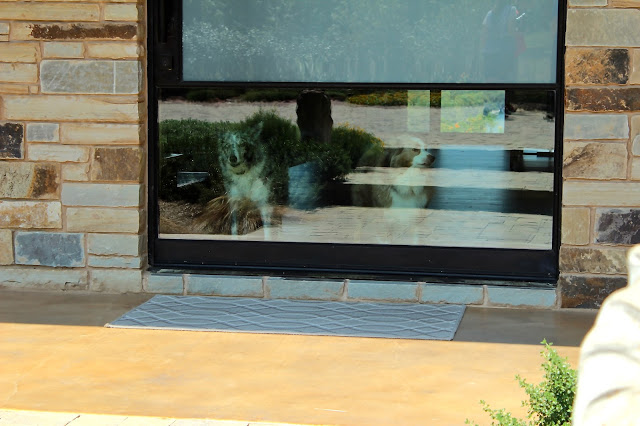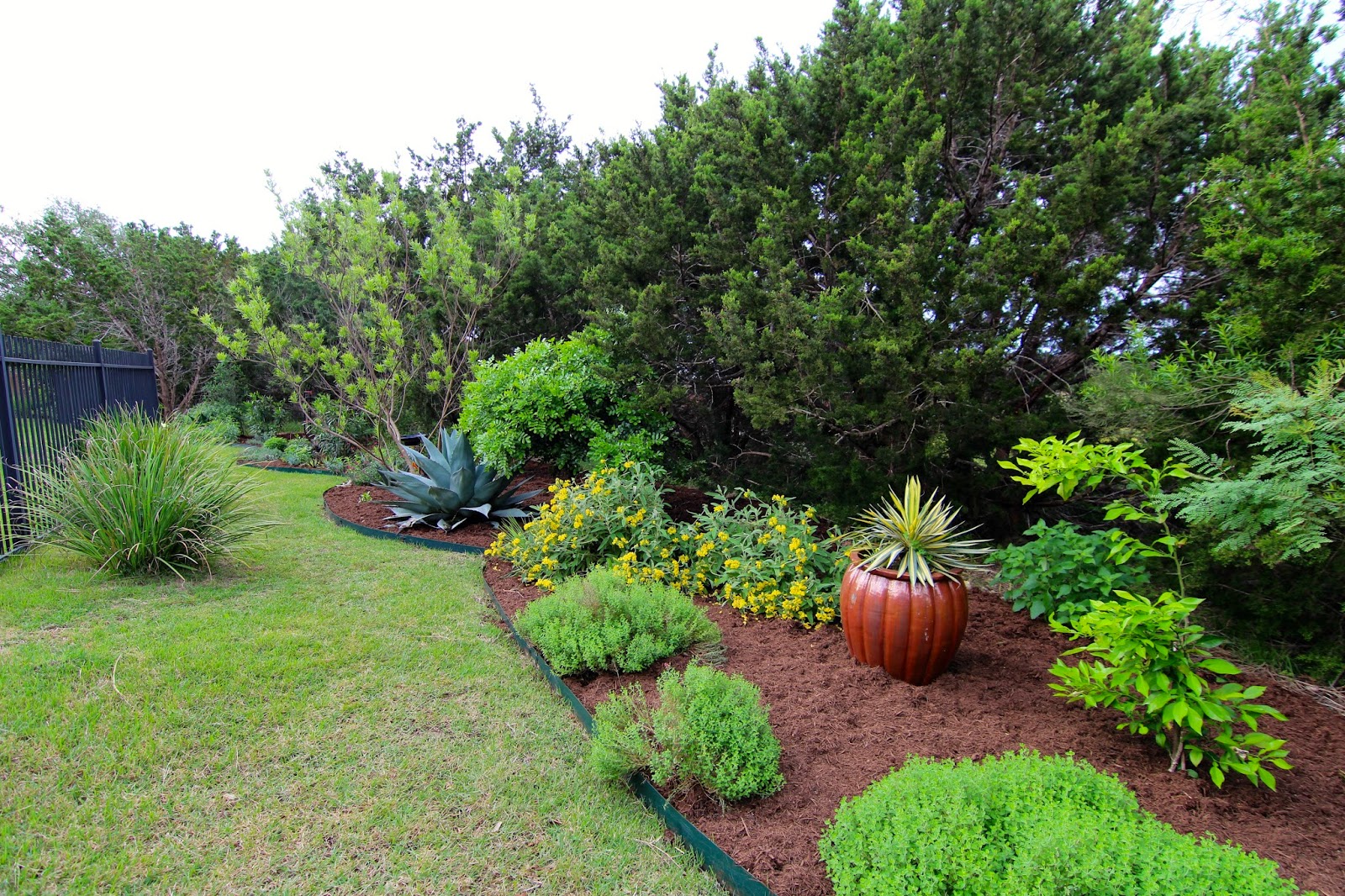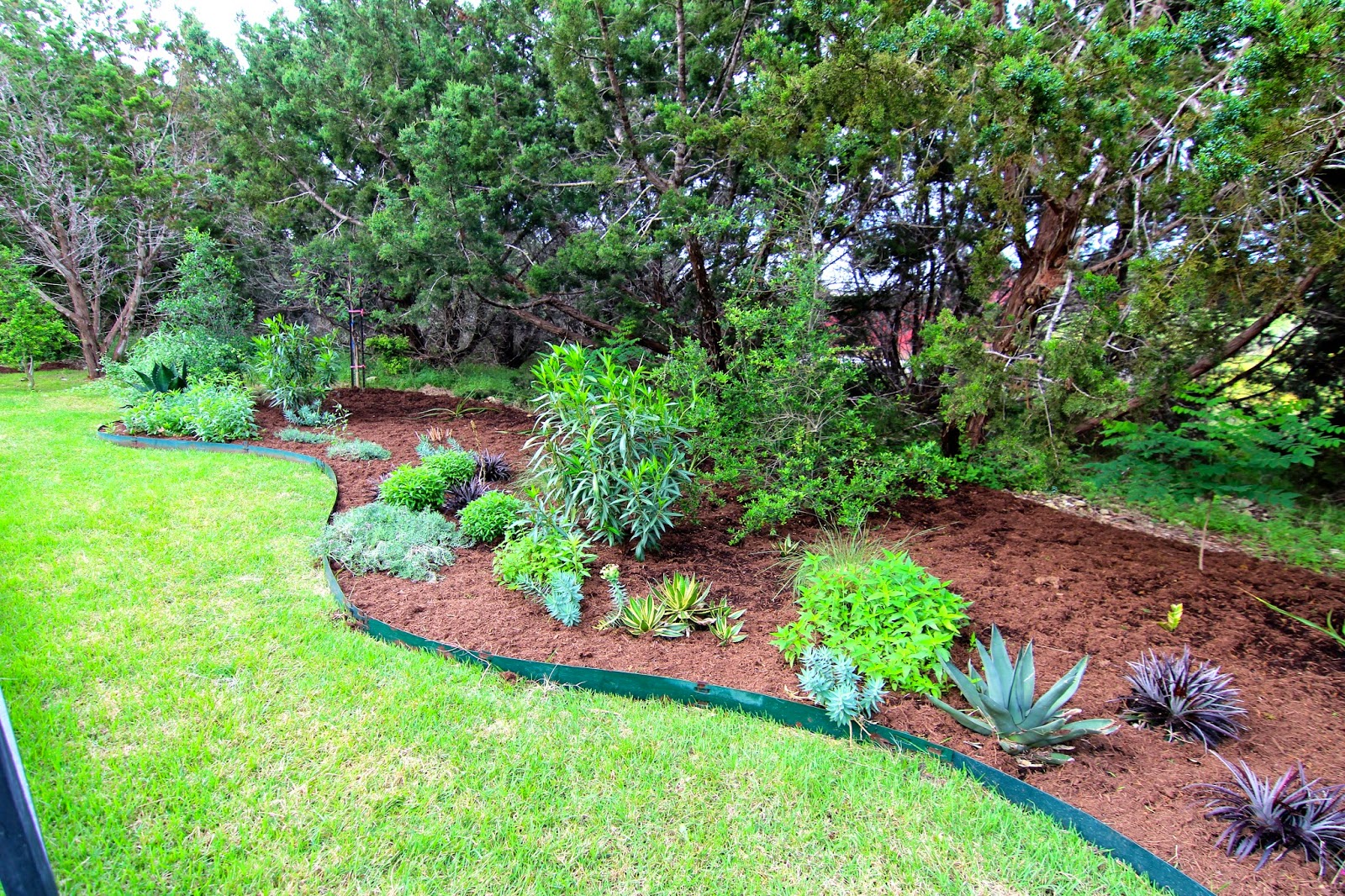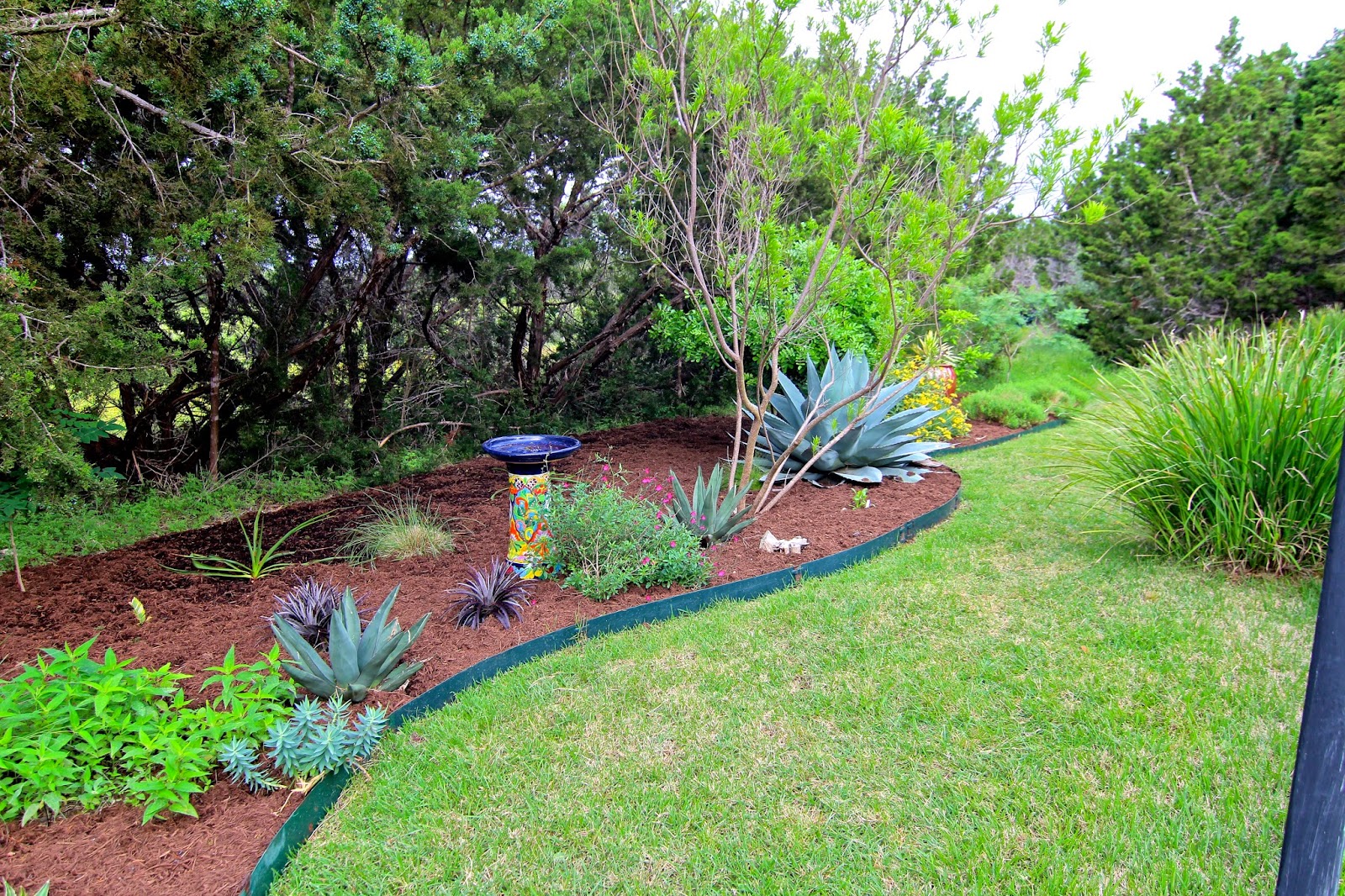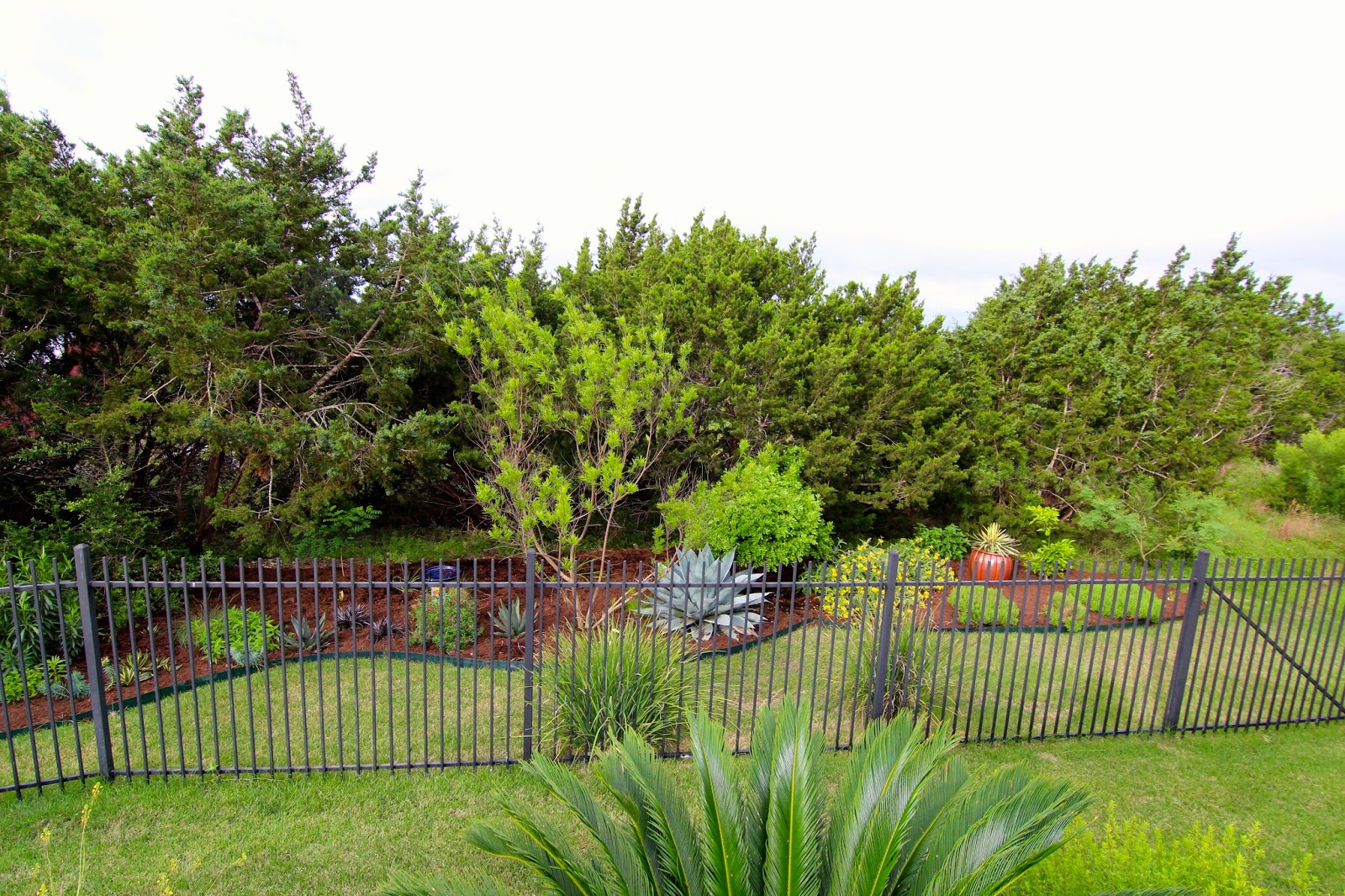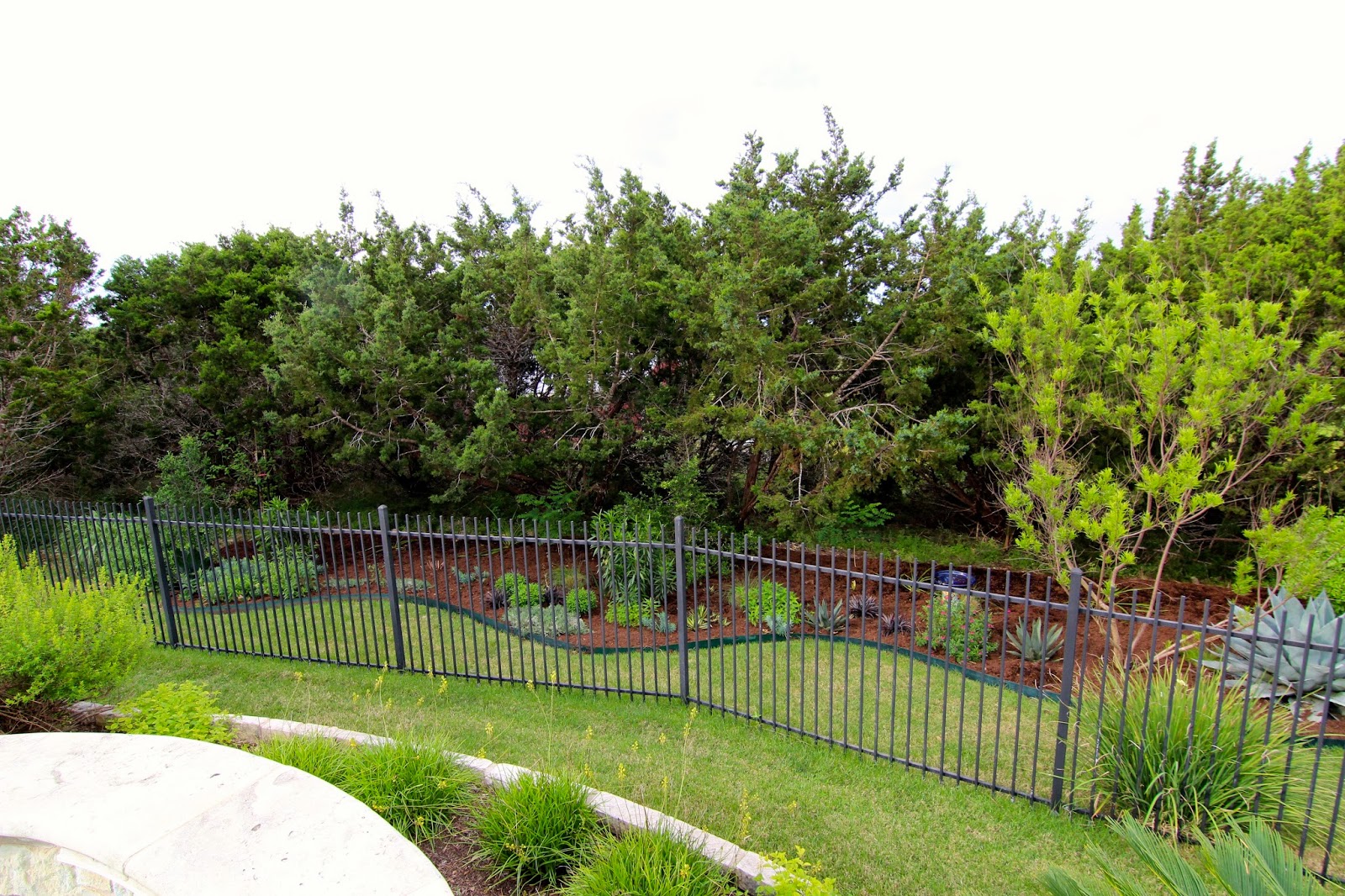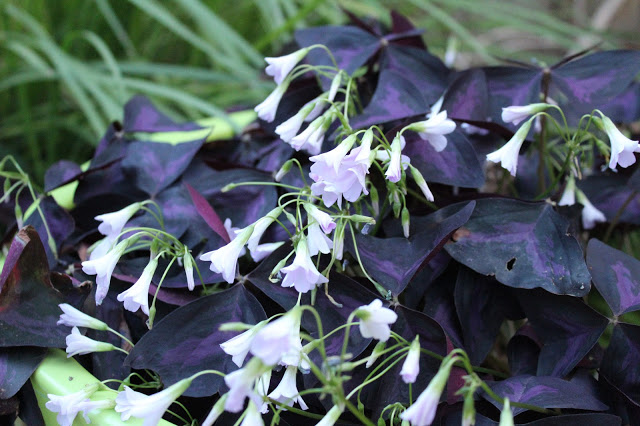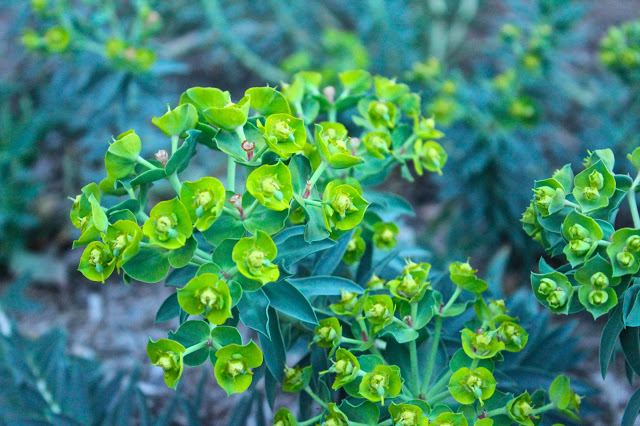Inside Austin Gardens Tour – Breathtaking garden with Lake Austin backdrop
Last week I got a preview of the wonderful gardens that will be on the popular Master Gardeners Inside Austin Gardens Tour 2015 on Saturday, October 17. The tour provides a rare look inside six private gardens and a public experimental garden. With the theme of For Gardeners, By Gardeners, the tour showcases 7 gardens with distinctly different garden styles. Tickets for all 7 gardens are $19 in advance or $20 at any garden location on the day of the tour. Single garden tickets for $5 can also be purchased at each garden. Purchase advance tickets here.
Sunbathing Natives1012 N Weston Lane 78733
The relationship between stone and plants creates an intricately woven tapestry as you enter this garden. Beautiful yet unassuming in its simplicity, this garden entry and driveway area is lined with deer resistant, drought tolerant and heat-loving natives. And they are all doing much more than holding their own.
And behind the glass these two imposing figures make up the secondary security team!
Step through a shade-lined rock path and the rest of the garden comes at you with an intensity that is palpable. First, there is color. A lot of color. And plants. Bright, hot, tropical colors and plants.
 And suddenly, your eye isn’t quite sure what to look at. The explosion of plant colors, the water right here, the water wayyyyyy down there…there is just so much to see.
And suddenly, your eye isn’t quite sure what to look at. The explosion of plant colors, the water right here, the water wayyyyyy down there…there is just so much to see.
The hot tub was crafted to replicate the water feature just inside the entrance to the Lady Bird Johnson Wildflower Center.
We had a special treat and were invited in to see the view from the owner’s wife’s painting studio upstairs. I’m not sure I could ever take my eyes off of that view!
Not only was this a beautiful garden set on an amazing piece of property, but the garden design was wonderful, enhancing the space and adding to the wow factor with the composition of plants and stone. You don’t want to miss this one! Get your tickets now and get there early for some great photographs.






